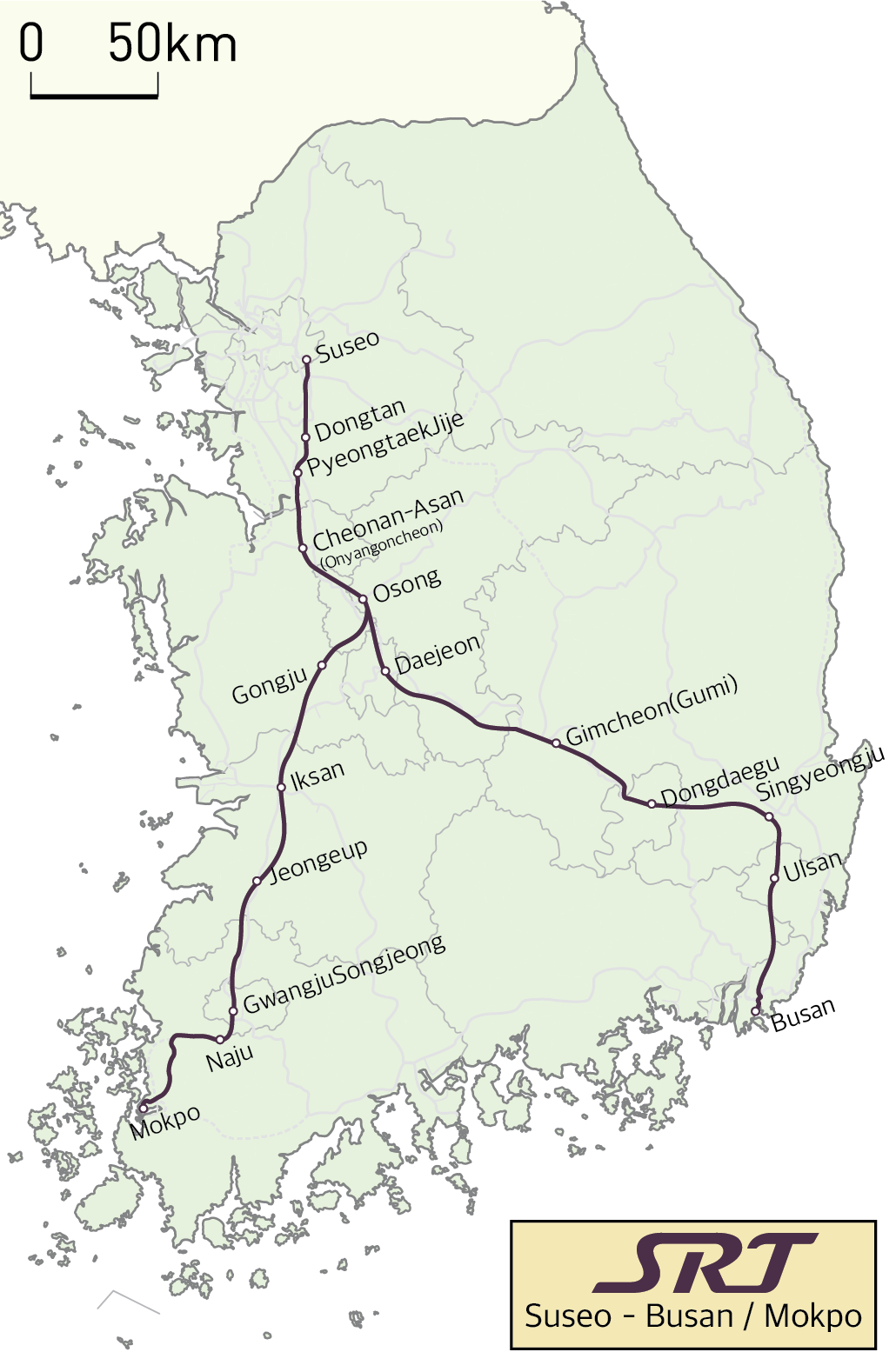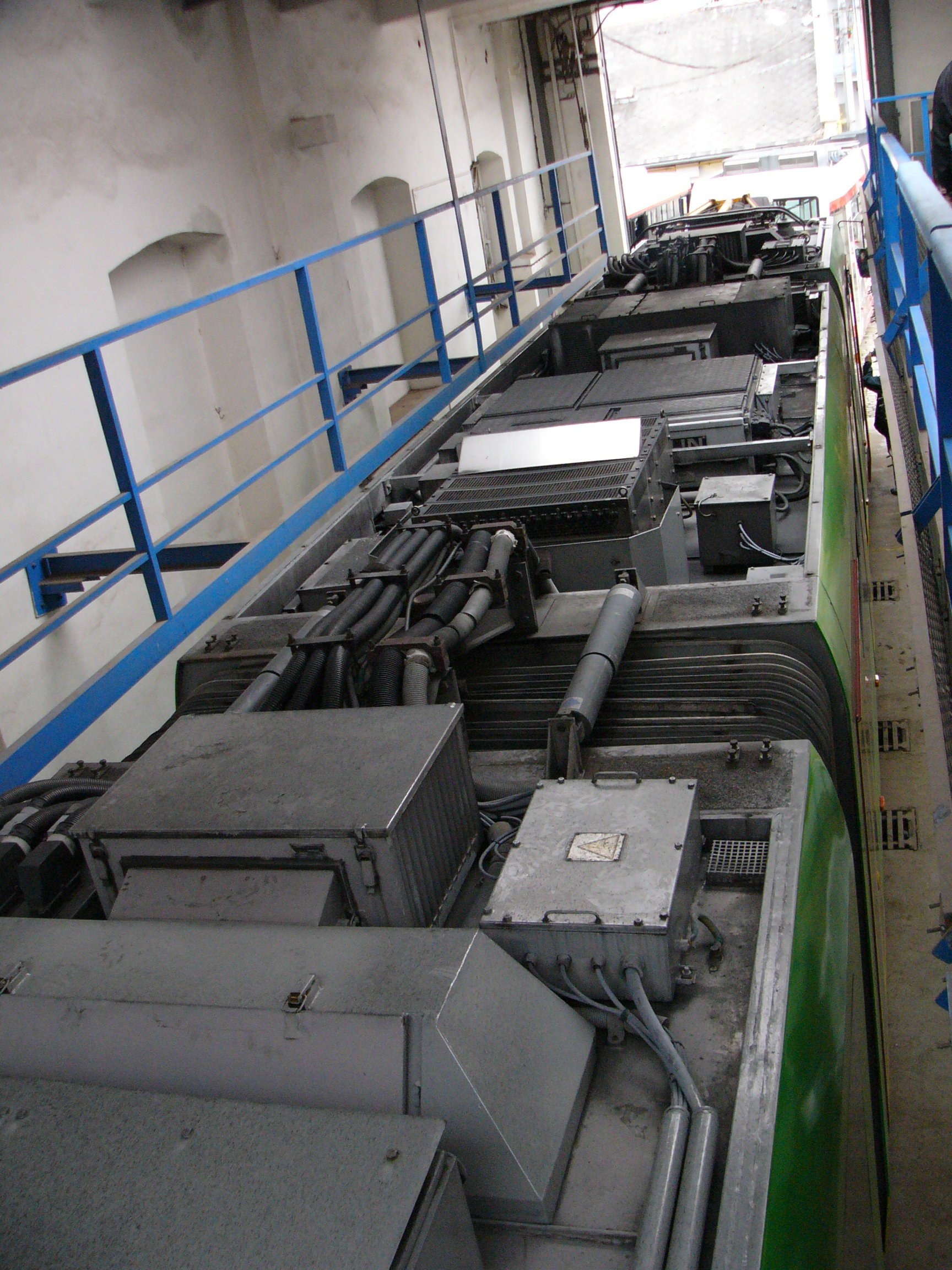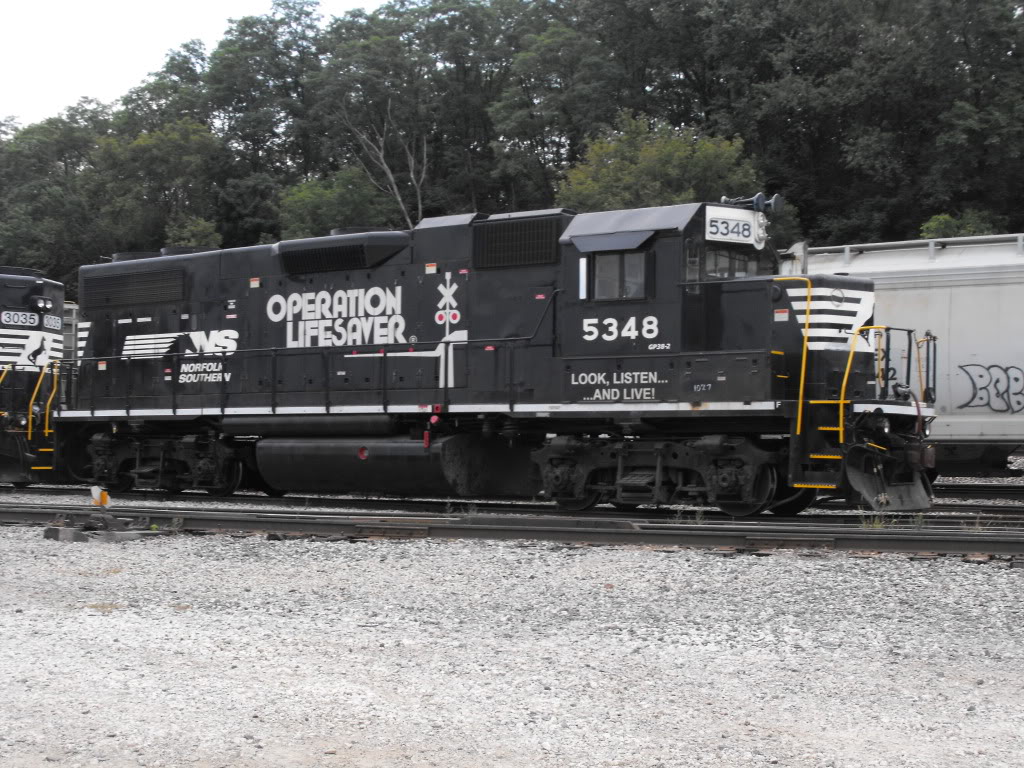|
KTX-II
The KTX-Sancheon (, formerly called the KTX-II) is a South Korean high-speed train built by Hyundai Rotem and operated by Korail and SR Corporation. With the maximum operational speed of , the KTX-Sancheon is the second commercial high-speed train operated in South Korea, as well as the country's first domestically developed high-speed train in commercial service. The KTX-Sancheon can be divided into four classes: Classes 110000 and 140000 which are owned and operated by Korail, Class 120000 which is owned by Korail but leased to SR Corporation for operation, and Class 130000 which is owned and operated by SR Corporation. History When South Korea started its high-speed rail project, rolling stock and infrastructure was built in the framework of a technology transfer agreement between GEC-Alsthom (today Alstom), the main maker of French TGV high-speed trains, and South Korean companies. Thus Korea Train Express (KTX) began operating with KTX-I trains, which were derived from th ... [...More Info...] [...Related Items...] OR: [Wikipedia] [Google] [Baidu] |
Gyeongbu High-speed Railway
The Gyeongbu high-speed railway, also known as Gyeongbu HSR, is South Korea's first high-speed rail line from Seoul to Busan. KTX high-speed trains operate three sections of the line: on 1 April 2004, the first between a junction near Geumcheon-gu Office station, Seoul and a junction at Daejeonjochajang station north of Daejeon, and a second between a junction at Okcheon station, southeast of Daejeon, and a junction near Jicheon station, north of Daegu entered service; then on 1 November 2010, the third section, between a junction west of Daegu and Busan became operational. The missing gaps across the urban areas of Daejeon and Daegu were in construction for an expected opening in 2014, separate tracks into Seoul Station were also planned. The temporary ends of the three sections were connected to the parallel conventional Gyeongbu Line by tracks that will serve as interconnector branches upon the completion of the entire line. On 1 August 2015, construction on urban areas ... [...More Info...] [...Related Items...] OR: [Wikipedia] [Google] [Baidu] |
Honam High-speed Railway
The Honam high-speed railway, also known as Honam HSR, is a high-speed rail between Osong (on the existing Gyeongbu high-speed railway) and Mokpo in South Korea. The line is a part of Korail's Korea Train Express (KTX) system, accelerating Seoul–Mokpo and Seoul–Gwangju KTX high-speed services which currently use the existing conventional Honam Line. On April 1, 2015, the line was inaugurated by the South Korean President Park Geun-hye with the attendance of 1200 invited guests and members of the public at Gwangju Songjeong Station in Gwangju, the line's terminus. The line diverges from Osong station on the Gyeongbu high-speed railway, and stops at Gongju, Iksan, Jeongeup Stations. Journey times between Seoul and Gwangju has been cut from 2 h 40 min to just 90 min, making daily commuting possible. The Honam HSR is intended to bring business, and economic opportunities to the province of Jeollanam-do, which has seen slower development than other parts of South Korea. The lin ... [...More Info...] [...Related Items...] OR: [Wikipedia] [Google] [Baidu] |
Gyeongjeon Line
The Gyeongjeon Line () is a railway line serving South Gyeongsang and South Jeolla Provinces in South Korea. It covers a total of 300.6 km, from Samnangjin Station in Miryang, South Gyeongsang, to Gwangju Songjeong Station in Gwangju, South Jeolla. History An east-west railway along Korea's southern shore was long seen as a strategic route, but it took a number of attempts to complete the line. The first section of the line was opened as a branch from the newly built Gyeongbu Line at Samnangjin to Masan in May 1905, which was named the Masan Line. On December 1, 1923, the Jinju Line opened from Masan to Jinju, extending the line to . A branch from Changwon on the ''Masan Line'' to Jinhae, the Jinhae Line, opened on November 11, 1926. Meanwhile, construction started in the opposite direction from Songjeong-ri (today Gwangju·Songjeong) on the Honam Line, the other end of the future Gyeongjeon Line, with the first to Gwangju opened in July 1922. The Gwangju Line was ... [...More Info...] [...Related Items...] OR: [Wikipedia] [Google] [Baidu] |
Jeolla Line
The Jeolla Line () is a railway line in North and South Jeolla Provinces in South Korea. The line is served by frequent passenger trains from Seoul (via the Gyeongbu and Honam Lines) to Yeosu. History The first railway along a section of what became the Jeolla Line was the Zenboku Lightrail Line, a narrow gauge line from Riri to Zenshu opened by the privately owned Zenboku Light Railway on 12 November 1917. In 1927, the line was nationalised, and the Chosen Government Railway (''Sentetsu'') soon set to converting the line to standard gauge; this work was begun on 18 April 1929 and completed later that year. Sentetsu then extended the line, completing the Jeonju– Namwon section in October 1931, the Namwon– Gokseong section in October 1933, and finally the Gokseong–Suncheon section on 16 December 1936. In 1936, Sentetsu nationalised the privately owned Chosen Railway's Gwangnyeo Line, which ran from Songjeongni to Yeosu and Yeosu Port via Suncheon, renaming ... [...More Info...] [...Related Items...] OR: [Wikipedia] [Google] [Baidu] |
Super Rapid Train
The Super Rapid Train (), often known as SRT, is a high-speed rail service in South Korea operated by SR Corporation. The service starts at Suseo station in southeast Seoul and terminates at either Busan station or Mokpo station. Around 86% of the train service runs 50 meters underground between Suseo and Cheonan-Asan stations. Dongtan station, the first station after departing from Suseo, is the first underground high-speed railway station in Korea. The SRT runs the Seoul–Busan route 8 minutes faster than KTX as it travels exclusively on dedicated Suseo–Pyeongtaek, Gyeongbu and Honam HSR lines. The Suseo-Pyeongtaek HSR line was built exclusively for this service. Branding Before official announcement by SR, Ministry of Land, Infrastructure and Transport used tentative term called ''Suseo High-speed Railway (수서고속철도)''. On October 12, 2015, SR proposed three candidate name for new high-speed rail service – SRT (Super Rapid Train), HSR (High-speed trai ... [...More Info...] [...Related Items...] OR: [Wikipedia] [Google] [Baidu] |
Pantograph (rail)
A pantograph (or "pan" or "panto") is an apparatus mounted on the roof of an electric train, tram or trolley buses to collect power through contact with an overhead line. The term stems from the resemblance of some styles to the mechanical pantographs used for copying handwriting and drawings. The pantograph is a common type of current collector; typically, a single or double wire is used, with the return current running through the rails. Other types of current collectors include the bow collector and the trolley pole. Invention The pantograph, with a low-friction, replaceable graphite contact strip or "shoe" to minimise lateral stress on the contact wire, first appeared in the late 19th century. Early versions include the bow collector, invented in 1889 by Walter Reichel, chief engineer at Siemens & Halske in Germany, and a flat slide-pantograph first used in 1895 by the Baltimore and Ohio Railroad. The familiar diamond-shaped roller pantograph was devised and p ... [...More Info...] [...Related Items...] OR: [Wikipedia] [Google] [Baidu] |
Electronically Controlled Pneumatic Brakes
Electronically controlled pneumatic brakes are a type of railway braking systems. Overview Traditional train braking systems use pneumatic valves to control and generate brake applications on the cars along the length of the train. In general, this conventional system consists of a brake pipe that runs the length of the train which supplies air to reservoirs mounted on each of the cars. When the brake pipe and car components are charged with air, the brakes release. When the engineer needs to make a brake application, control valves in the locomotive reduce the brake pipe pressure. As the brake pipe pressure is reduced, the service portions on each car divert air from their reservoirs to their brake cylinders. To release the brakes, the engineer charges the brake pipe. This method of controlling the brakes on freight and passenger cars has remained virtually unchanged since its invention by George Westinghouse in 1868. The conventional braking system suffers from many weakness ... [...More Info...] [...Related Items...] OR: [Wikipedia] [Google] [Baidu] |
Regenerative Brake
Regenerative braking is an energy recovery mechanism that slows down a moving vehicle or object by converting its kinetic energy or potential energy into a form that can be either used immediately or stored until needed. Typically, regenerative brakes work by driving an electric motor in reverse to recapture energy that would otherwise be lost as heat during braking, effectively turning the traction motor into a generator. Feeding power backwards through the system like this allows the energy harvested from deceleration to resupply an energy storage solution such as a battery or a capacitor. Once stored, this power can then be later used to aid forward propulsion. Because of the electrified vehicle architecture required for such a braking system, automotive regenerative brakes are most commonly found on hybrid and electric vehicles. This method contrasts with conventional braking systems, where excess kinetic energy is converted to unwanted and wasted heat due to friction ... [...More Info...] [...Related Items...] OR: [Wikipedia] [Google] [Baidu] |
Rheostatic Brake
Dynamic braking is the use of an electric traction motor as a generator when slowing a vehicle such as an electric or diesel-electric locomotive. It is termed " rheostatic" if the generated electrical power is dissipated as heat in brake grid resistors, and " regenerative" if the power is returned to the supply line. Dynamic braking reduces wear on friction-based braking components, and regeneration lowers net energy consumption. Dynamic braking may also be used on railcars with multiple units, light rail vehicles, electric trams, trolleybuses, and electric and hybrid electric automobiles. Principle of operation Converting electrical energy to the mechanical energy of a rotating shaft (electric motor) is the inverse of converting the mechanical energy of a rotating shaft to electrical energy (electric generator). Both are accomplished through the interactions of armature windings with a (relatively) moving external magnetic field, with the armature connected to an electrical c ... [...More Info...] [...Related Items...] OR: [Wikipedia] [Google] [Baidu] |
Railway Air Brake
A railway air brake is a railway brake power braking system with compressed air as the operating medium. Modern trains rely upon a fail-safe air brake system that is based upon a design patented by George Westinghouse on April 13, 1869. The Westinghouse Air Brake Company was subsequently organized to manufacture and sell Westinghouse's invention. In various forms, it has been nearly universally adopted. The Westinghouse system uses air pressure to charge air reservoirs (tanks) on each car. Full air pressure causes each car to release the brakes. A subsequent reduction or loss of air pressure causes each car to apply its brakes, using the compressed air stored in its reservoirs. Overview Straight air brake In the air brake's simplest form, referred to as a ''straight air system'', compressed air is directed to a ''brake cylinder'', causing its piston to apply force to mechanical linkage, which linkage is conventionally referred to as the ''brake rigging'' (see illu ... [...More Info...] [...Related Items...] OR: [Wikipedia] [Google] [Baidu] |
Disc Brake
A disc brake is a type of brake that uses the #Calipers, calipers to squeeze pairs of #Brake pads, pads against a disc (sometimes called a [brake] rotor) to create friction. There are two basic types of brake pad friction mechanisms: abrasive friction and adherent friction. This action slows the rotation of a shaft, such as a vehicle axle, either to reduce its rotational speed or to hold it stationary. The energy of motion is converted into heat, which must be dissipated to the environment. Hydraulic brakes, Hydraulically Actuator, actuated disc brakes are the most commonly used mechanical device for slowing motor vehicles. The principles of a disc brake apply to almost any rotating shaft. The components include the disc, master cylinder, and caliper, which contain at least one cylinder and two Brake pad, brake pads on both sides of the rotating disc. Design The development of disc-type brakes began in England in the 1890s. In 1902, the Lanchester Motor Company designed bra ... [...More Info...] [...Related Items...] OR: [Wikipedia] [Google] [Baidu] |
25 KV AC Railway Electrification
Railway electrification systems using alternating current (AC) at are used worldwide, especially for high-speed rail. It is usually supplied at the standard utility frequency (typically 50 or 60Hz), which simplifies traction substations. The development of 25kV AC electrification is closely connected with that of successfully using utility frequency. This electrification is ideal for railways that cover long distances or carry heavy traffic. After some experimentation before World War II in Hungary and in the Black Forest in Germany, it came into widespread use in the 1950s. One of the reasons it was not introduced earlier was the lack of suitable small and lightweight control and rectification equipment before the development of solid-state rectifiers and related technology. Another reason was the increased clearance required under bridges and in tunnels, which would have required major civil engineering in order to provide the increased clearance to live parts. Where existin ... [...More Info...] [...Related Items...] OR: [Wikipedia] [Google] [Baidu] |








